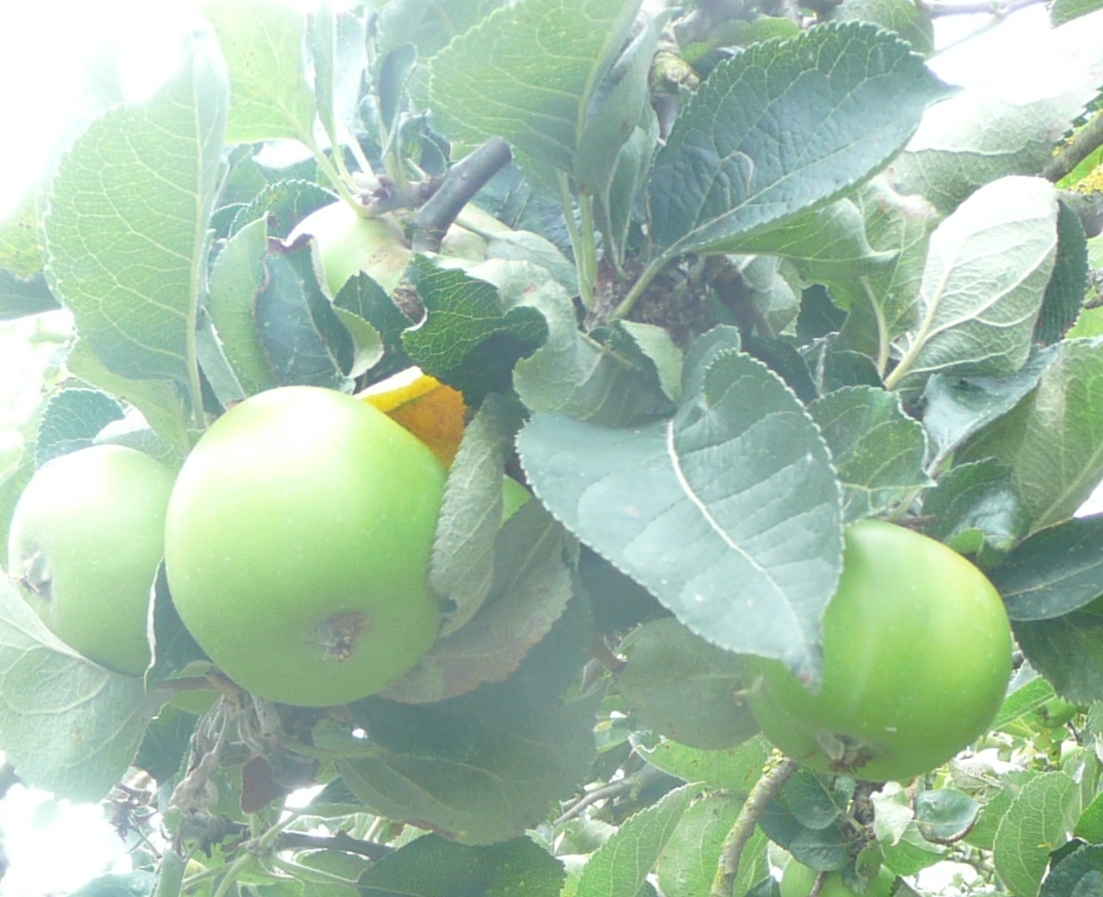After moving house recently I gained a tree full of Bramley apples, a variety used for cooking. This autumn I stored some, ate quite a lot and gave away more. Now as January wears on I still have loads that won't keep much longer. Our apple consumption has increased. My colleagues' and friends' apple consumption has increased. Visitors beware. I can believe the stats that say apples are one of the most consumed fruits. But what about that old adage 'an apple a day keeps the doctor away'? is it true…is apple consumption good for you?
Apples appear quite humble in the superfood stakes – they don't hit the headlines very often although they are one of the most highly consumed fruits worldwide. But they have a high concentration of total antioxidants, chemicals that combat ageing, compared to other fruits and they are a good source of one particular type- phenolic compounds. According to a review in Nutrition Journal (1): "In the United States, twenty-two percent of the phenolics consumed from fruits are from apples making them the largest source of phenolics. Flavonoids are one type of phenolic compound. In Finland, apples and onions are main sources of dietary flavonoids, while in the Netherlands apples rank third behind tea and onions as top sources of flavonoids.
Phenolics in apples have an advantage over phenolics from other sources- they appear not to be bound to other compounds so they may be more available to be absorbed.
What do these phenolic compounds from apples do? They are antioxidants and so they protect the body from damage that accumulates with ageing and they are beneficial against chronic diseases. Epidemiological studies suggest apples and apple flavonoids may help reduce risks of cancer, heart disease, and could decrease risk of asthma, and diabetes (1). The Iowa Women's Health Study found that consumption of apple flavonoids lowered heart disease risk: "Individual flavonoid-rich foods associated with significant mortality reduction included .. apples or pears or both and red wine (associated with CHD and CVD)." (2) Animal and in vitro studies add to this evidence.
So maybe apples are superfoods after all. Just a bit shy about advertising the fact.
Back to the Bramleys- I peel and cook them so does that affect these phenolics? Quercetin is the apple's best known flavonoid. Unfortunately for me it seems, quercetin is found mostly in the apple peel. All is not lost however as there are significant amounts of other apple antioxidants in the flesh as well as in the peel. These include catechins, phloridzin and chlorogenic acid, and the amounts vary a lot between varieties and with the way the apples are grown (3,4). Cooking also reduces the levels of phenolics but storage has little effect (5).
So the challenge is to cook minimally and incorporate the peel or try the apples raw for maximum health benefit. Or I could cut down the tree and plant a dessert apple tree – but thats a bit extreme for a tree hugger like me.
I got the references for this article from Nutrition and Food Sciences database. The site also has a review of quercetin in cancer prevention: Molecular targets of quercetin in cancer prevention
1. Apple phytochemicals and their health benefits Jeanelle Boyer and Rui Hai Liu Nutrition Journal 2004, 3:5 doi:10.1186/1475-2891-3-5
2. Flavonoid intake and cardiovascular disease mortality: a prospective study in postmenopausal women. Mink, P. J.; Scrafford, C. G.; Barraj, L. M.; Harnack, L.; Hong, C. P.; Nettleton, J. A.; Jacobs, D. R., Jr. American Journal of Clinical Nutrition 2007 Vol. 85 No. 3 pp. 895-909
3. Cultivar variation in apple peel and whole fruit phenolic composition by Barbara Lataa, Aleksandra Trampczynskab and Justyna Paczesnaa Scientia Horticulturae Volume 121, Issue 2, 17 June 2009, Pages 176-181.
4. Polyphenolic profiles in eight apple cultivars using high-performance liquid chromatography (HPLC). Tsao Rong; Yang, R.; Young, J. C.; Zhu HongHui. Journal of Agricultural and Food Chemistry 2003 Vol. 51 No. 21 pp. 6347-6353
5. Changes in the inner quality parameters of apple fruit from technological to edible maturity. Petkovšek, M. M.; Štampar, F.; Veberic, R. Acta Agriculturae Slovenica 2009 Vol. 93 No. 1 pp. 17-29
Related News & Blogs
Empowering marginalized communities: Success story of Mr Maula Dad, an apple grower from Balochistan
Balochistan province is famous for producing apples, contributing more than 80% to the total apple production in Pakistan, and therefore has a significant impact on the household income of farmers in the region. However, apples are also prone to infest…
4 September 2018


